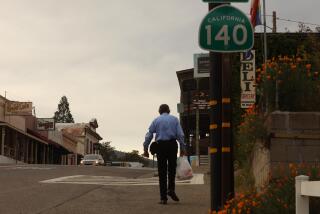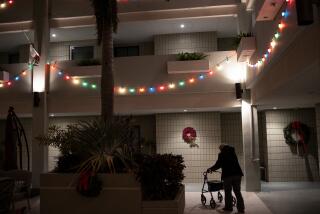Ready, set, retire, but where?
Boomers aren’t going to retire, says former real estate honcho Barbara Corcoran. Or, at least, they’re not going to retire to a rocking chair. Instead, look for boomers to move on to the next phase in their lives -- hence the title of her new book, “Nextville.”
This well-researched guide goes beyond a “real estate” focus to a more comprehensive exploration of that next boomer phase. It offers practical information and insights based on national surveys and numerous interviews, citing real people and real places as examples.
Corcoran, founder of the New York City-based real estate firm the Corcoran Group, is now president of Barbara Corcoran Inc., a TV production company. She enlisted writer Warren Berger and a team of researchers to help with the book, in which she implores readers to think “outside the hammock” and forget Florida.
She starts out with a quiz to find out which direction to point you in: Are you a “zoomer” or a “ruppie? A “huddler” or a “boomerang”?
A zoomer packs up after retirement and zooms away -- far away, to Panama or Prince of Wales Island in Alaska. A ruppie moves downtown after years in the suburbs (“ruppie” stands for Retired Urban People). A huddler gathers together friends or finds like-minded people and creates a 21st century version of the commune. A boomerang divides his or her time between two preferred places.
Corcoran features 100 national -- and international -- destinations, with a handful spotlighted in each chapter. She includes details that make each place appealing and offers a ballpark estimate of real estate costs, an inside tip, a bonus fact, the number of sunny days each year and the median age of the population.
For instance, the inside tip for Galveston, Texas, a birder’s paradise: century-old downtown Victorians in the low $200,000s. Knoxville, Tenn., a boater’s dream, has this as a bonus: low property taxes -- and no broad-based income tax. Try out Tryon Farm, Ind. The farm owns the property, and you buy a share in the entire community-living settlement.
In the southern Nicoya Peninsula of Costa Rica, you can grow your own patch of rain forest -- but don’t leave your property unattended or you may end up with hard-to-evict squatters.
Each chapter also includes shorter “snapshots” of other places that fall into Corcoran’s retirement categories.
She also acknowledges that, for some people, staying put is an option. “If you’ve already found paradise,” she writes, “why keep searching?” If that’s the option you choose, she suggests you consider retrofitting or upgrading your home to make it more retirement friendly and includes a list of the top 10 improvements to consider.
Real estate advice is sprinkled liberally throughout the book. The box “How to Decode a Real Estate Ad” provides these guideposts: “Cozy means too small. Charming means too old. . . . Conveniently located means noisy.”
Nextville is thorough and thoughtful enough to appeal to a broader audience than soon-to-be retirees. It could prove useful for younger readers looking for a place to settle down. For readers seeking more information, Appendix C lists useful websites for finding places to live or retire.
There is one minor fault: The fancy font used in the many boxes throughout the book was sometimes difficult to read.
--
Nextville;
Amazing Places to Live the Rest of Your Life;
Barbara Corcoran with Warren Berger;
Springboard Press: 264 pp., $24.99
More to Read
Sign up for The Wild
We’ll help you find the best places to hike, bike and run, as well as the perfect silent spots for meditation and yoga.
You may occasionally receive promotional content from the Los Angeles Times.






